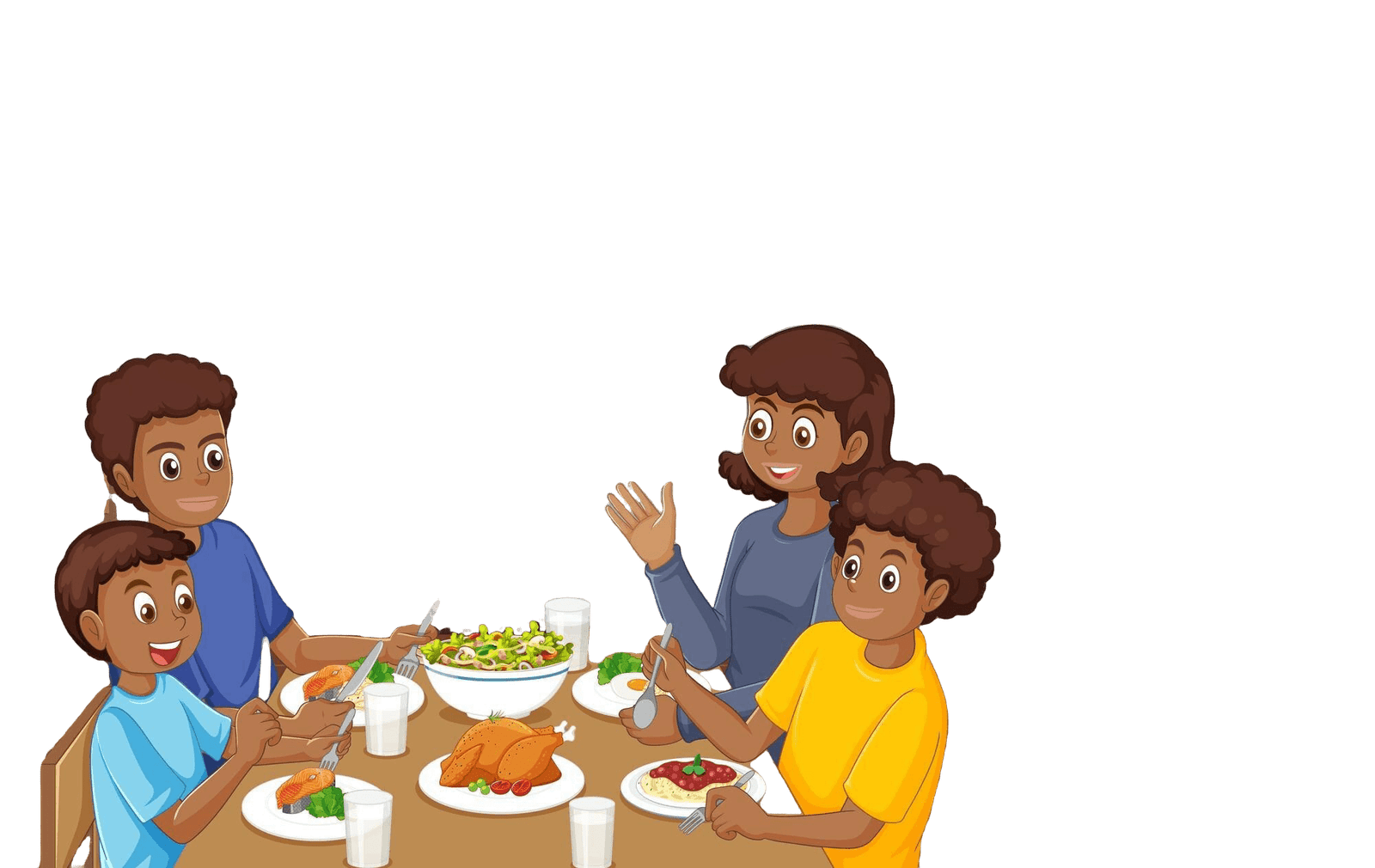Table Manners means maintaining a formal decorum during mealtimes in different setups. Teaching table manners to kids helps as a foundational step toward social and personal development. Good table etiquette includes respect, politeness, and confidence to navigate mealtime interactions with ease. Essential table manners include sitting properly, using utensils correctly, saying “Thank you” and “Please”, chewing with mouth closed, and not interrupting.
This article explains how these essential habits enhance the children’s overall character and prepare them for various social settings.
Check out the details of the Best Schools in the electronic city emphasizing on essential life skills for students to interact in social settings.
Why Table Manners Matters for Kids
Good table manners play a foundational role in shaping a child’s social skills and character. They have less to do with dining but more to do with enhancing respect, confidence, and effective interaction with others in a formal or informal dining setup. Let’s understand why good table manners matter to the kids.
Building Respect
- Table manners teach children to respect others.
- It helps in making children aware of the presence and efforts of others.
- Using words of gratitude like “thank you” and “please”, waiting for the turn to speak, or refraining from disturbing or interrupting others, fosters a culture of respect and courtesy.
- Manners influence a child’s behavior in social and professional settings.
- This respect extends beyond mealtime into other setups as they grow.
Boosting Confidence
- Children can learn how to handle themselves at the table.
- Good table manners instill confidence in children making them comfortable in unfamiliar or formal setups.
- It helps to engage them in a formal conversation at a friend’s house or a family gathering.
- They help in presenting a positive impression at meet-ups.
Enhancing Social Skills
- Good manners help children to converse or engage meaningfully in social occasions.
- Helps in engaging in a polite conversation along with chewing the food properly and using the utensils gracefully.
- These skills help in strengthening relationships and maintaining ease during social Interactions.
When Should You Start Teaching Table Manners?
Developing table manners is a gradual process through the stages of infancy and the later stage of childhood, i.e., adolescence or teenage. Introduction to basic habits helps children at an early stage to establish a foundation for more complex manners as they grow in the future. Incorporating table manners from an early age depends on the parents. First, parents should use positive reinforcement and age-appropriate lessons to navigate children through social situations in the future with confidence and respect.
Infancy
- Infancy in the age group refers to babies with ages from 6 to 12 months.
- Parents can model their behaviors while eating solid foods.
- They can make them behave themselves by sitting straight at the table, using utensils, or cleaning up.
- Though it does not make them mimic the actions immediately, they are exposed to proper dining habits by setting the tone.
Toddlerhood
- Toddlerhood refers to the age group of children from 1 to 3 years.
- For parents or teachers, this age is an ideal age to introduce simple rules of table manners.
- Such table manners include using a spoon or saying “please” and “thank you”.
- This also includes avoiding throwing food rather than passing it on to somebody else.
- As toddlers are naturally curious, consistent reinforcement helps them understand the expectations.
Preschool Age
- Preschool age refers to the age group of babies from 3 to 5 years.
- This should be the stage where children should be more aware of detailed manners by applying them.
- These manners include chewing with their mouths closed and waiting for their turn to speak.
- This develops motor skills and language and better comprehension in practice.
Essential Table Manners Every Child Should Learn
As essential table manners foster self-discipline and confidence, it is imperative on the part of parents or teachers to prepare them to navigate social settings gracefully. Below are the five fundamental table manners every child should master.
1. Sitting Properly at the Table
- Sitting properly at the dining table is a foundational table manner.
- Teach them to sit upright without slouching or fidgeting during meals.
- Make them to be mindful and focus on eating without preventing or disrupting others at the table.
- Explain them by demonstrating respect towards the occasion and for the people around them.
- Provide chairs suitable for their size and height, encouraging them at the family meals.
- Use gentle reminders to redirect their wandering attention at the dining table.
- Ensure the child understands the importance of staying seated while everyone finishes their meals.
2. Using Utensils Correctly
- Introduce them to the basics of how to hold a spoon, fork, bowl, knife, and plate.
- Show them how a correct grip should be to understand the purpose of each utensil.
- Provide them with child-friendly utensils designed for their hands while starting.
- Teach them how to use a knife and fork together without causing any damage to themselves.
- Emphasize the importance of keeping utensils on the plate when they are not put to use.
- Simulate the restaurant or formal dining scenarios at home to teach this skill
3. Saying “Please” and “Thank You”
- Politeness and formal behavior are important aspects of maintaining table manners.
- Teach your children to say “please” when requesting food.
- Teach your children to say “thank you” while receiving respect at the table.
- Teach them to show appreciation for the effort involved in preparing the meal.
- Teach them to praise the food for being tasty.
- Ensure that you maintain polite behavior with expressions during meals.
- Reward them with a sticker or a small treat for maintaining consistent polite behavior at the table.
- Teach them the importance of developing strong social skills and fostering kindness in social interactions.
4. Chewing With Mouth Closed
- Teach them the importance of chewing the food in their mouth without spilling over.
- Show them how unpleasant it can be to chew food with an open mouth.
- Teach them that it is one of the most impolite ways of depriving the maintenance of culture.
- Encourage them to take small bites and chew them thoroughly before swallowing.
- Provide gentle reminders during meals to sustain it as a habit.
- Do not create anxiety around eating by shaming or scolding them.
- Correct their behavior with encouragement and patience.
- Create scenarios such as fancy restaurants or dinner parties at home to teach them polite chewing.
5. No Interrupting During Meals
- Teach them that mealtime is a valuable opportunity to connect and converse.
- Tell them to avoid interruption while maintaining respectful communication.
- Explain the importance of waiting their turn to speak and share their thoughts without feeling ignored or rushed.
- Model good behavior by showing respect to others when they are speaking.
- Encourage your kids to use a polite phrase like excuse me or raise their hands to speak urgently.
- Make them feel included and less tempted to interrupt during the conversations.
Conclusion
Therefore, teaching essential table manners to children equips them with enough social skills to navigate through formal or professional setups in the future. Sitting properly at the table, using utensils correctly, saying please or thank you, chewing with mouth closed, and no interruptions during meals, unstill habits of self-respect and self-discipline.
Ultimately, by following the above tips and strategies by parents or teachers with positive reinforcements, table manners will become a lifelong habit for the children toward personal growth and social success.
FAQs (Frequently Asked Questions)
- What are the basic table manners kids should know?
The basic table manners for kids to know are to sit properly, use utensils gracefully, chew with their mouths closed, say “please” and “thank you”, and wait for their turn to speak without interruption. - At what age should I start teaching my child table manners?
At the age of 6 to 12 months, start teaching them by modeling behavior. By preschool, they refine their skills like chewing adequately or waiting for their turn to converse without interrupting.
- How can I make learning table manners fun for my kids?
Play role-play scenarios by creating public dining or family gatherings with positive reinforcement and child-friendly utensils. Provide them stickers, rewards, or small treats to make table manners an engaging and enjoyable activity.
- What should I do if my child refuses to follow table manners?
Do not shame them or scold them. Be patient and consistent in correcting their behavior. Encourage progress by using positive reinforcements rather than pointing out our mistakes.
- How do table manners help in a child’s overall development?
Table manners foster patience, respect, and essential social skills to sustain in formal set-ups. They help children to interact effectively and develop lifelong habits to maintain harmonious relationships



